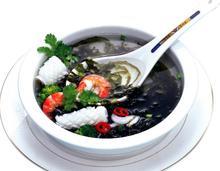Hong Kong Announces Results of Total Dietary Metal Contaminants
Safety rope Safety rope Shandong Binzhou Yong'an Labor Protection Factory , https://www.zhuqiangsafetybelt.com (Hong Kong) Centre for Food Safety (CFS) announced on the 11th of the fifth report of Hong Kong’s first total dietary study on January 11 that local residents ingest daily aluminum, gallium, cadmium, lead and methylmercury from their diets. The amount of seven common metal contaminants, such as mercury (commonly known as mercury), nickel, and tin, is low and will not pose a threat to public health. Even so, the Center recommends that pregnant women and other people more susceptible to methylmercury should avoid eating larger fish or other fish with high levels of methylmercury.
(Hong Kong) Centre for Food Safety (CFS) announced on the 11th of the fifth report of Hong Kong’s first total dietary study on January 11 that local residents ingest daily aluminum, gallium, cadmium, lead and methylmercury from their diets. The amount of seven common metal contaminants, such as mercury (commonly known as mercury), nickel, and tin, is low and will not pose a threat to public health. Even so, the Center recommends that pregnant women and other people more susceptible to methylmercury should avoid eating larger fish or other fish with high levels of methylmercury.
A spokesman for the center said: "Metal contaminants distributed in the environment can occur naturally or from human activities (such as industrial activities). Food will inevitably contain a small amount of metal contaminants. Food is the main source of metal contaminants for adults in general. Because of the accumulation of metal contaminants in humans and damage to organs, its chronic toxicity is of concern."
He said that according to the findings of the study, even the high intake of people in Hong Kong, the daily intake of individual components of the above-mentioned seven metal pollutants from the diet was lower than the relevant safety reference value, and thus caused a health risk. The chance is not great.
The Food and Agriculture Organization of the United Nations/World Health Organization Joint Expert Committee on Food Additives (the Committee of Experts) believes that adults generally do not have a health risk if they consume about 3.3 micrograms of methylmercury per kilogram of body weight per week. However, in order to protect the health of the fetus, the tolerable weekly intake of pregnant women should be more stringent than the average adult, ie 1.6 micrograms per kilogram of body weight per week.
The spokesman said: "According to this more stringent standard, research shows that about 11% of women of childbearing age in Hong Kong (that is, women between the ages of 20 and 49 years old) have more methylmercury than they consume. Weekly tolerable intake."
Methylmercury is more toxic than mercury and can cause human neurotoxicity. For the above-mentioned 11% of women of child-bearing age, the health risk to individuals is not significant. However, if she is pregnant, methylmercury can enter the fetus through the placenta and accumulate in the brain and other tissues of the fetus, affecting the development of the brain.
The spokesman said: "The main source of methyl mercury consumption by the public is fish and other seafood, and methyl mercury in food cannot be reduced through cooking."
Bacteria in rivers, lakes, and oceans convert mercury into methylmercury, a metal contaminant that is easily bioabsorbed and can be transported by the food chain from tiny plants and animals to larger organisms. It accumulates in fish and binds closely to proteins in fish tissues. Therefore, the accumulation of methylmercury in larger fish species will generally be more.
To reduce the risk of metal contamination, the spokesman reminded the public to maintain a balanced and diversified diet. He stated that groups susceptible to methylmercury, such as pregnant women, women who are planning to become pregnant, and young children, should avoid eating large-sized hunting fish or other fish with high levels of methylmercury when choosing fish. For example, tuna fish, goldfish, sharks, swordfish, swordfish, thorny orange and king mackerel. Most fish (especially smaller fish) have low levels of methylmercury, and fish contain a variety of nutrients that the body needs, such as omega-3 fatty acids, high-quality protein, etc. Eat a variety of fish.
The spokesman reminded the food industry that it should meet good agricultural practices and manufacturing practices in order to reduce the risk of food contamination by metal objects. They should also purchase food from reliable suppliers and comply with the requirements of the Food Safety Ordinance (Chapter 612 of the Laws of Hong Kong). They should keep good records in order to trace the source of food when necessary.
The first study on the total diet in Hong Kong commenced in March 2010 and the entire study will be completed in 2014. The first four reports (concerning dioxins and dioxin-like PCBs, inorganic arsenic, polybrominated diphenyl ethers, and residues of pesticides) have been published.
The Total Diet Study assesses the general public and different population groups, and estimates the intake of these substances in relation to health from the dietary intake of various selected substances (including pollutants and nutrients). The study focused on the overall diet of the people in Hong Kong instead of individual foods.
The study selected 150 types of foods based on the food consumption patterns of the public and tested more than 130 pesticides, persistent organic pollutants, metal pollutants, mycotoxins, major nutrients and elements in these foods. The content of these substances, combined with data on the amount of food consumed, allows the public to estimate the amount of various selected substances from the diet.